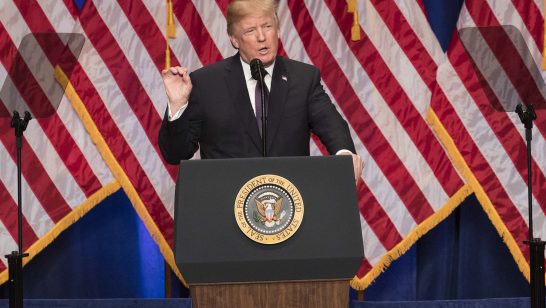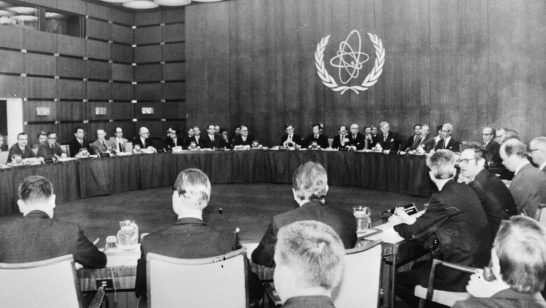
The 2010 NPT Review Conference Action Plan committed Nuclear Weapons States (NWS) to accelerate concrete progress on steps leading to nuclear disarmament. It is widely recognised that a Fissile Material Cut-Off Treaty (FMCT) is one of those steps. Progress has been remarkably slow since the initiative was adopted by the Geneva-based Conference on Disarmament (CD) over 15 years ago. No formal, substantive discussions on an FMCT have taken place, a fact contributed to both by the Conference’s consensus decision-making procedures, and by a lack of political will by states such as Pakistan. Fortunately, recent developments in the ‘P5 plus’ forum – which gathers seven of the nine nuclear-armed states, including Pakistan – offer some small, but encouraging prospects of altering the status quo deadlock.
Pressure for progress towards an FMCT has spiked over the past two years. Expectations created by the 2010 Review Conference Action Plan put NWS in the spotlight. Frustration with the CD impasse has reached an all-time high, as diplomats rotate in and out of the CD with no tangible achievements to speak of. As a result, in 2011 the UN General Assembly resolved to consider options for negotiating an FMCT outside of the CD at its sixty-seventh session, which opened in September 2012 and closed in December.
The FMCT ‘options’ debate in the UN
As I outlined recently in Arms Control Today, several ‘options’ for alternate forums were contemplated by UN Member States, some more ideal than others. Informal FMCT discussions amongst the ‘P5 plus’ (China, France, Russia, the UK, US, and other nuclear-armed states) nevertheless hold the best prospects for getting traditional hold-outs like Pakistan and China to the table. Participation in this forum gives invitees some control over the direction of substantive FMCT discussions, something they have been eager to maintain in the CD. And the ’P5 plus’ opacity and exclusivity may promote discussion on complex and technically-sensitive issues such as verification, away from the scrutiny of the public and governments.
It now seems that the nuclear-armed states (minus North Korea, which was not invited, and possibly Israel, which maintains an opaque nuclear posture) have been taking part. In October, the US issued a formal statement on the P5’s efforts to work towards an FMCT. It said: ‘A year ago the United States initiated consultations among the P5 and others on unblocking FMCT negotiations in the CD, and to prepare our own countries for what we expect would be a challenging negotiation.’ The ‘others’ are rumoured to include Pakistan, India, and again, possibly Israel.
Securing the participation of these ‘others’ is no small feat. For the first time, the states which would be most affected by an FMCT are having coordinated, substantive discussions. Complemented by the continuing efforts of multilateral technical expert groups, chances for progress on the FMCT are improving.
This stands in stark contrast to progress made in consideration of the issue in the General Assembly. In November 2012, Canada, the leader of the campaign to take the FMCT beyond the agenda of the CD, successfully renewed its proposal for the establishment of a Group of Governmental Experts. Approval of the draft resolution in the 1st Committee of the UN General Assembly was secured by a large margin, with only Pakistan opposing. The Experts Group will consist of representatives of 25 Member States, selected on the basis of regional representation. It will ‘make recommendations on possible elements that could contribute’ to an FMCT.
This proposal was attempted but withdrawn in 2011 because of objections from the Non-Aligned Movement and P5, both of which felt it went too far in removing the FMCT from the CD. Two amendments to the Canadian proposal made it palatable, and highlight the real trajectory of FMCT discussions over the coming three years. The first is the inclusion of a familiar consensus decision-making procedure for the Group of Governmental Experts. De-facto veto for all participants likely appeased the Non-Aligned Movement and nuclear-armed states, hesitant of approving the opening stage of a non-CD FMCT process. In practice, it means that controversial recommendations or observations will not make it to the General Assembly floor. The Group’s report will likely be a classic case of lowest common denominator outcome, containing little that is helpful for catalysing FMCT discussions.
The second amendment to Canada’s original proposal was the inclusion of a clear timeline for the Group’s meetings. As outlined by the resolution, they will meet for two sessions of two weeks in 2014 and 2015. This defers their discussions until after the 2014 NPT Preparatory Committee, and their final report until after the 2015 Review Conference.
This renders the Group of Governmental Experts essentially meaningless. Since no work will be done until late 2014, the ‘P5 plus’ will remain the sole real focus of hopes for FMCT progress before the next NPT Review Conference. If the ‘P5 plus’ does create movement, however small, then the ‘lowest common denominator’ finding in the GGE will likely match the areas of established agreement in the ‘P5 plus’. If the nuclear-armed states participating in a ‘P5 plus’ process towards an FMCT cannot agree by 2014 (when the P5 has committed to report on their progress) they will certainly not be able to agree on a meaningful statement in a Group of Governmental Experts context either.
An imperfect but important opportunity
Despite the notable downsides to substantive FMCT discussions in a ‘P5 plus’ forum, the existence of that dialogue is an unprecedented opportunity which should therefore be carefully managed by all with an interest in the FMCT.
Experts and officials in nuclear-armed states, but outside of the small bureaucratic circles directly involved in ‘P5 plus’ consultations, should encourage continued active participation by their governments. Non-nuclear weapon states should do the same, demonstrating patience with the process on the one hand, while maintaining the expectation that concrete progress, however small, will be articulated in 2014. Moderated but clear expectation can sharpen the choices of nuclear-armed states in relation to an FMCT.
The international community should also express a desire for periodic P5 statements on the FMCT. However vague, these statements require intense coordination (it is reported that the P5 statement at the 2012 NPT Preparatory Committee took six months to draft). Such exercises can cement through iteration the bureaucratic channels and dialogue between nuclear-armed states that may prove useful for advancing not only an FMCT, but responsible nuclear policy in general. If these steps are taken, the next 12 months are unlikely to see a breakthrough, but there is more room for moderated optimism on the FMCT today than there has been for several years.
The opinions articulated above represent the views of the author(s), and do not necessarily reflect the position of the European Leadership Network or any of its members. The ELN’s aim is to encourage debates that will help develop Europe’s capacity to address the pressing foreign, defence, and security challenges of our time.



